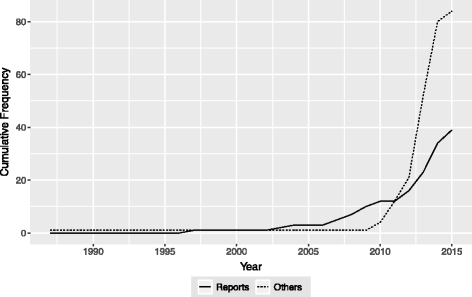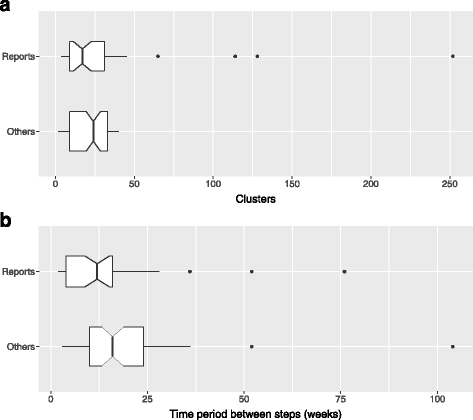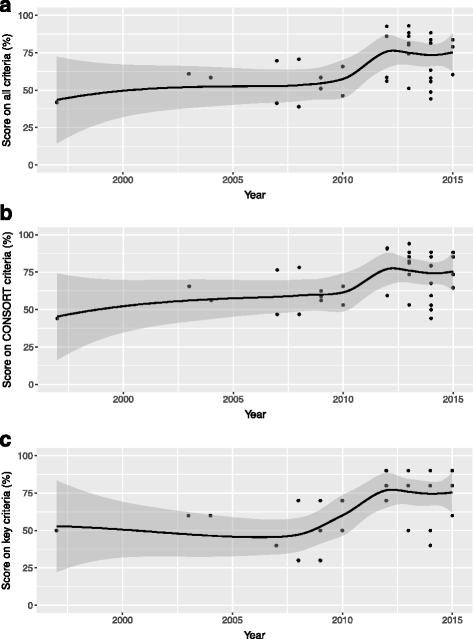Stepped wedge cluster randomized controlled trial designs: a review of reporting quality and design features
- PMID: 28109321
- PMCID: PMC5251280
- DOI: 10.1186/s13063-017-1783-0
Stepped wedge cluster randomized controlled trial designs: a review of reporting quality and design features
Abstract
Background: The stepped wedge (SW) cluster randomized controlled trial (CRCT) design is being used with increasing frequency. However, there is limited published research on the quality of reporting of SW-CRCTs. We address this issue by conducting a literature review.
Methods: Medline, Ovid, Web of Knowledge, the Cochrane Library, PsycINFO, the ISRCTN registry, and ClinicalTrials.gov were searched to identify investigations employing the SW-CRCT design up to February 2015. For each included completed study, information was extracted on a selection of criteria, based on the CONSORT extension to CRCTs, to assess the quality of reporting.
Results: A total of 123 studies were included in our review, of which 39 were completed trial reports. The standard of reporting of SW-CRCTs varied in quality. The percentage of trials reporting each criterion varied to as low as 15.4%, with a median of 66.7%.
Conclusions: There is much room for improvement in the quality of reporting of SW-CRCTs. This is consistent with recent findings for CRCTs. A CONSORT extension for SW-CRCTs is warranted to standardize the reporting of SW-CRCTs.
Keywords: Cluster randomized controlled trial; Reporting quality; Review; Stepped wedge.
Figures




References
-
- Machin D, Campbell MJ. The design of studies for medical research. Chichester: John Wiley & Sons; 2005.
-
- Friedman LM, Furberg CD, DeMets D, Reboussin DM, Granger CB. Fundamentals of clinical trials. New York: Springer; 2015.
-
- Meinert CL, Tonascia S. Clinical trials: design, conduct, and analysis. Oxford: Oxford University Press; 1986.
-
- Wang D, Bakhai A. Clinical trials: a practical guide to design, analysis, and reporting. London: Remedica; 2006.
Publication types
MeSH terms
Grants and funding
LinkOut - more resources
Full Text Sources
Other Literature Sources

